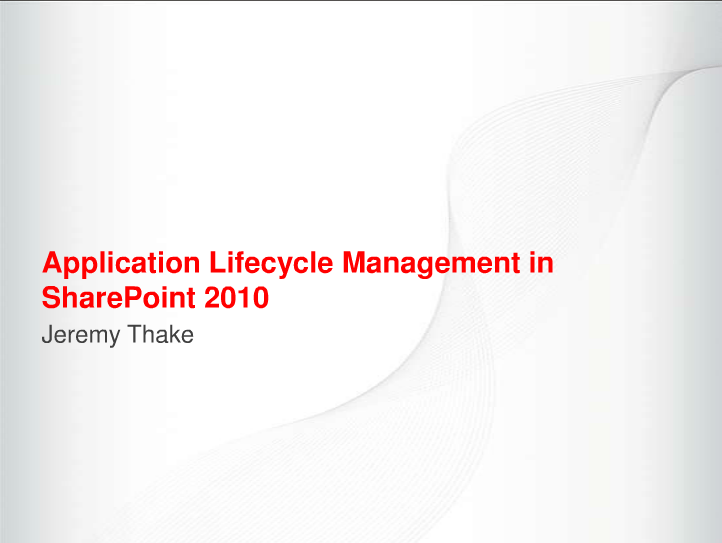Application Lifecycle Management in Microsoft SharePoint 2010

By Jeremy T.

Last night I presented at the New York SharePoint User Group on Application Lifecycle Management (ALM) in Microsoft® SharePoint® 2010.
Some of my thoughts from the feedback in the audience:
It was a mixed crowd of approximately 50 people, of which 10 were developers, 5-10 were IT Pros and the rest were a mix of Business Users and general SharePoint enthusiasts.
All developers were using Solution Packages.
Not all the developers were using source control, which disappointed me because anything you do in Microsoft® Visual Studio® 2010 needs to be version controlled especially if the application makes it into Production environments!
None were using Team Foundation Server, mostly due to the complexities of the installation and were using SVN mostly as it was free.
Only one was using a Build Server to create Solution Packages automatically from source control.
None of the developers were doing automated unit testing due to the complexities of the SharePoint object model.
None of the developers were conducting automated integration testing due to the complexities of setting up an environment replicating Production.
None of the developers were doing automated web testing or load testing mainly due to the fact they weren’t aware of the tools available in Visual Studio 2010.
Of the 20 odd people in the room using SharePoint Designer 2010, all of them were doing the work directly in Production environments because it was too hard to promote changes through from Development to Test to Production.
I will be presenting this again at SharePoint Saturday Philadelphia this weekend, and will be interested to see whether the consensus is the same there as well.

Share this blog